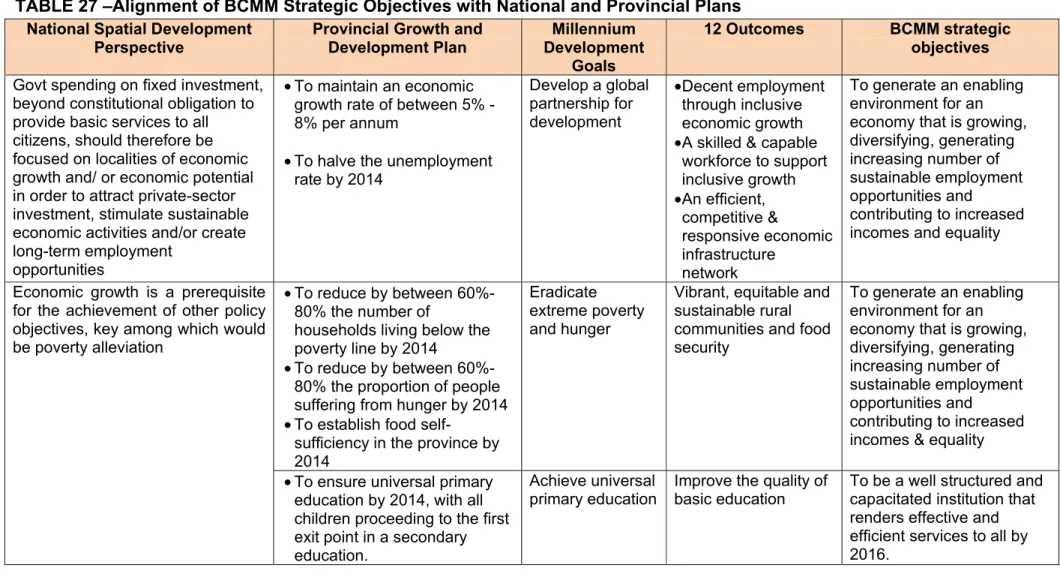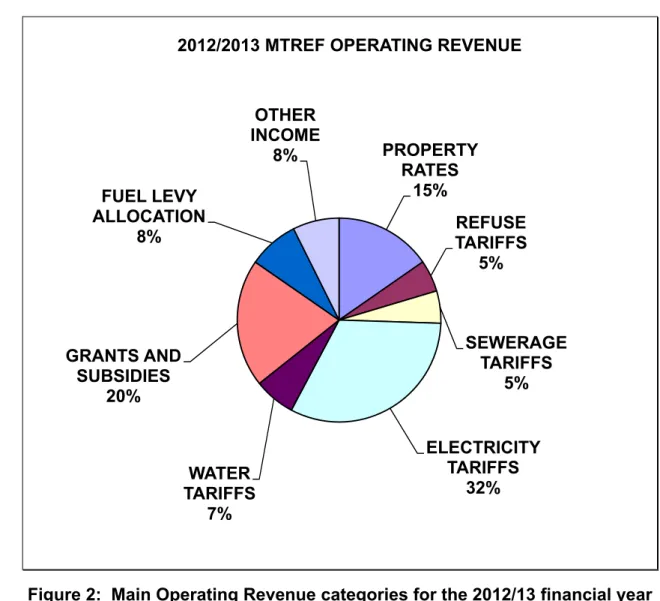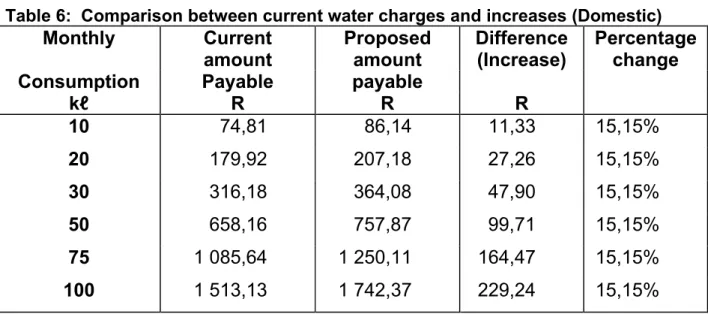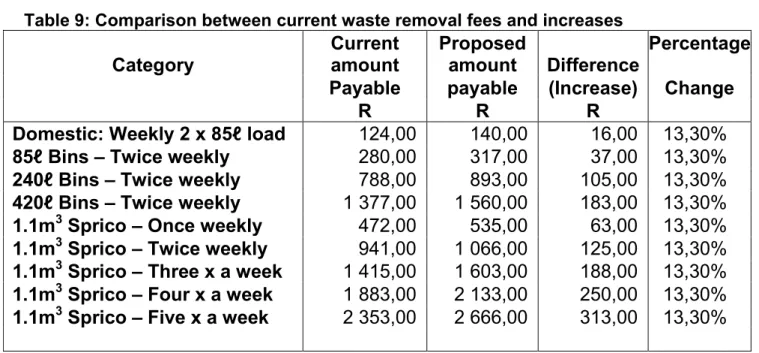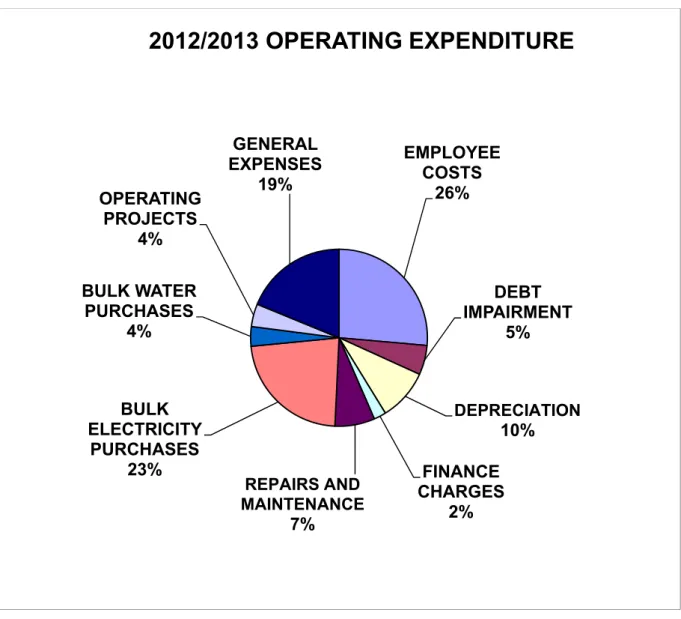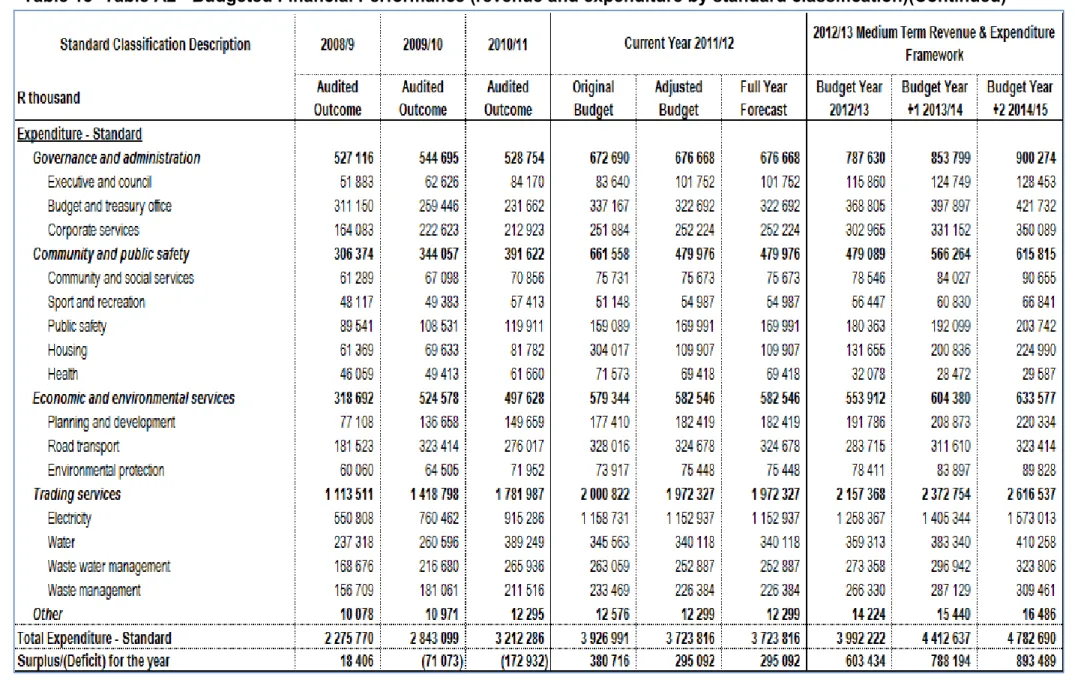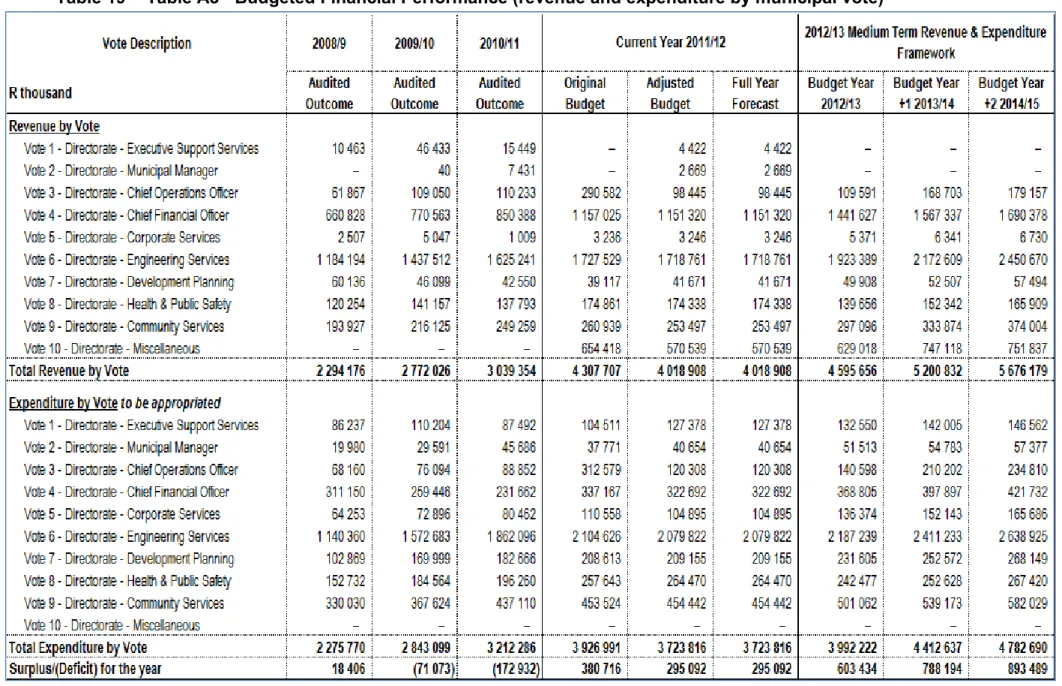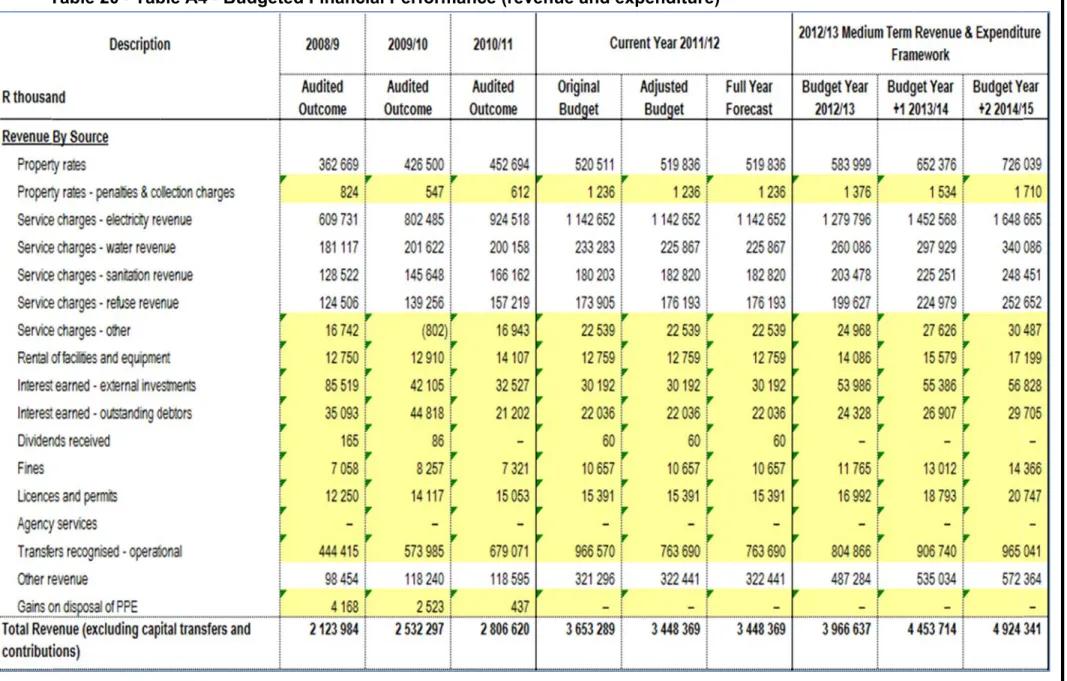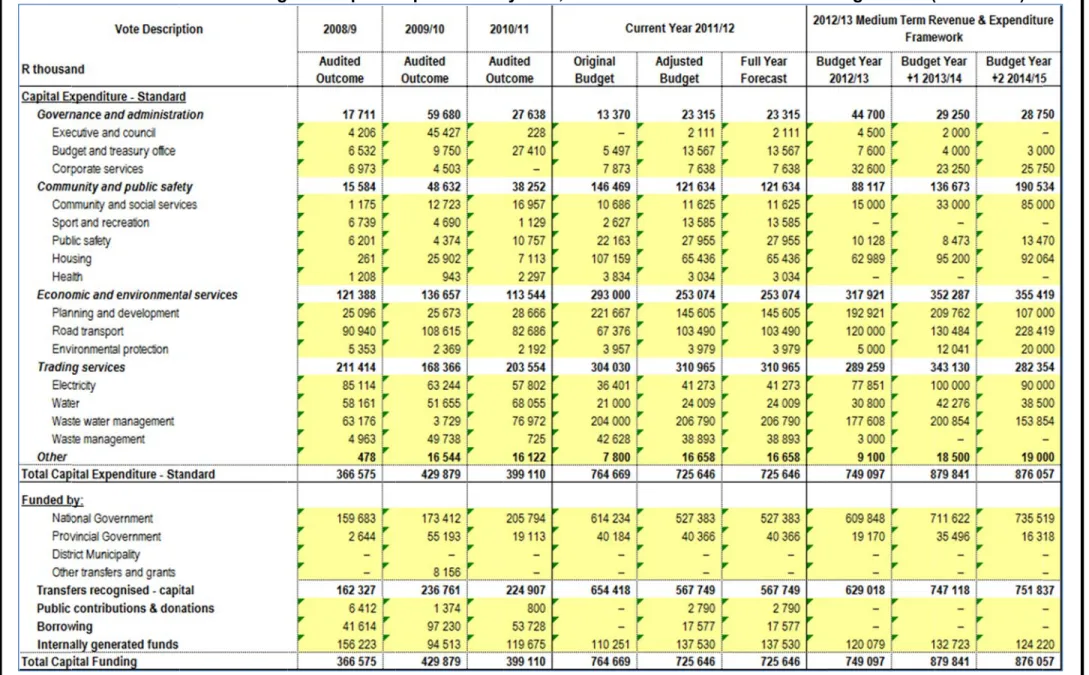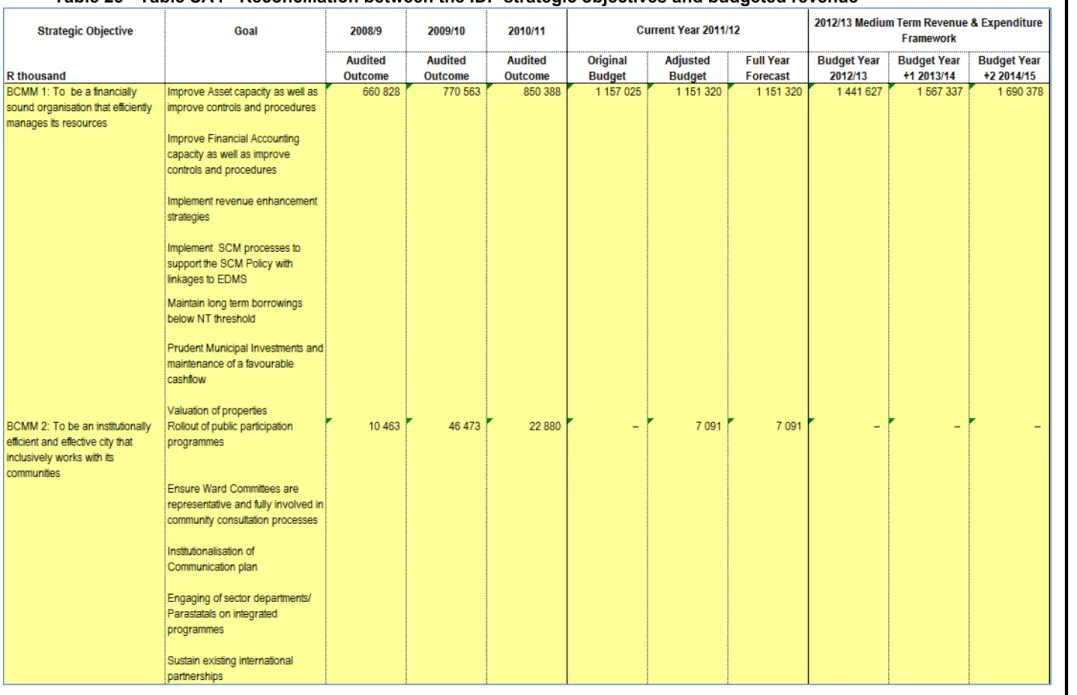It is recommended that the Council of the Metropolitan Municipality of Buffalo City, acting under section 24 of the Municipal Finance Management Act (No. 56 of 2003), approve and adopt the revised Integrated Development Plan (IDP) 2012/13 and the following resolutions :-. The Council of the Metropolitan Municipality of Buffalo City, pursuant to section 75A of the Local Government Act: Utilities Act (Act 32 of 2000) approves and adopts with effect from 1 July 2012 the tariffs for other services as set out in Schedule F. 8 That no. new capital expenditures must be made until a funding commitment is received by the Metropolitan Municipality of Buffalo City and such project is approved by the council.
Buffalo City is classified nationally as having "medium potential" and is therefore not considered a national development priority, with Coega and the Nelson Mandela Metro receiving priority in terms of national infrastructure funding allocations. Historically, the level of development in the Buffalo City area has been negatively affected both by its relatively remote location in relation to the major centers of economic activity in South Africa (Johannesburg, Cape Town and Durban) and by the previous socio-political and economic impact. of policies. Disposable income is also scarce in Buffalo City as a whole, and there is a consequent need to focus on overcoming the legacy of underdevelopment that affects the city's population and local economy.
BCMM Future Spatial Development (Urban Perspective)
BCMM Future Spatial Development (Rural Perspective)
Medium to Long Term Development
National Port Authority regarding the port expansion to ensure alignment and integration of plans for maximum benefit to both parties. BCMM worked closely with the Airports Company of South Africa in the Development of the East London Airport Master Plan to ensure integration and alignment of plans such as BRT incorporation into the Terminal. The expansion of the airport has benefits for industry as it will increase cargo volumes in and out of the East London Industrial Development Zone (ELIDZ).
Broadband is recognized as an essential communication tool for businesses, and it is believed that the establishment of broadband in Buffalo City would be a catalyst in attracting businesses to the city.
Key Challenges & Constraints
Strategies to overcome our challenges
EXECUTIVE SUMMARY
BCMM FIVE YEAR STRATEGIC FOCUS AREAS Strategic Focus Areas
- Improving performance, compliance, processes and systems
Reversing the trend and building citizens' confidence will require a concerted effort on the part of Metro. Being a predominantly rural metro, the divide manifests itself in terms of the dichotomy between urban and rural areas in terms of access to telecommunications and IT systems. A key objective of Metro is to ensure that telecommunications and IT systems become internationally compatible, thereby facilitating access to broadband and/or other modern technologies for the citizens of the city and region.
One of the threats to the future development of the Buffalo City Metro is the lack of adequate education and skill levels. A significant portion of Metro's potential workforce has not attended school or completed their primary stage. To achieve financial sustainability, the City will establish mechanisms for recording and managing the City's financial resources and investigating and developing new revenue streams to ensure further financial sustainability of the Metro.
Past And Current Performance Achievements And Challenges .1 Service Delivery
Service Delivery Standards, Levels Of Service, Outcomes, Bcmm Target And Financial Implication
The following is a summary of BCMM’s current backlog with target dates
OPERATING REVENUE FRAMEWORK
- Property Rates
- Sale of Water and Impact of Tariff Increases
- Sale of Electricity and Impact of Tariff Increases
- Sanitation and Impact of Tariff Increases
- Waste Removal and Impact of Tariff Increases
- Overall impact of tariff increases on households
Municipal property rates policy adopted in terms of the Municipal Property Rates Act, 2004 (Act 6 of 2004) (MPRA);. Therefore, the determination of the effective property rate fee is an integral part of the municipality's budgeting process. The implementation of these regulations was carried out in the previous budget process and the policy of property fees in the Municipality was changed accordingly.
In addition to this rebate, a further R25 000 reduction on the market value of a property will be granted in terms of the City's own Property Tax Policy. However, BCMM, in preparation of the 2012/13 MTREF budget, will only be cost reflective in the 2014/15 financial year. The following table shows the overall expected impact of the tariff increases on a large and small household, as well as a needy household receiving free basic services.
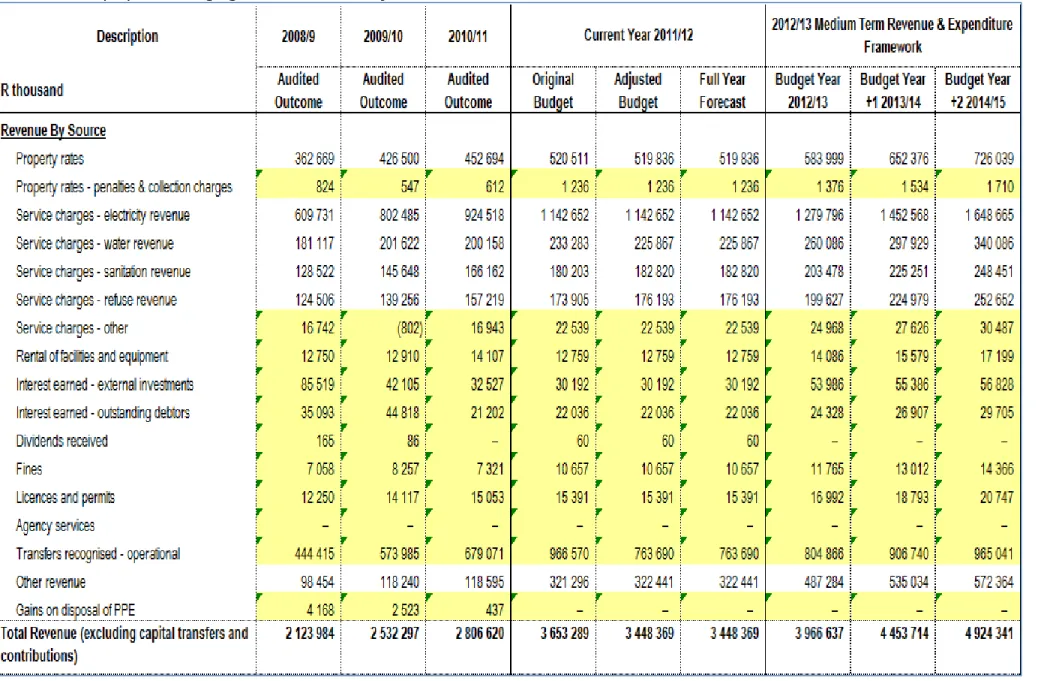
OPERATING EXPENDITURE FRAMEWORK
The budgeted allocation for employee-related costs for the financial year 2012/13 amounts to R1,053 million, which is 26.4% of the total operating expenses. While this expense is considered to be a non-cash flow item, it informed the total cost associated with providing the municipality's services, as well as the municipality's actual projected revenue. The provision for impairment is widely regarded as an indicator for measuring the rate of consumption of assets.
Budget allocations in this regard amount to R376.5 million for the 2012/13 financial year and are equal to 9.4 per cent of total operating expenditure. Financing costs mainly consist of the repayment of interest on long-term loans (cost of capital). Other expenses consist of various line items related to the daily operations of the municipality.
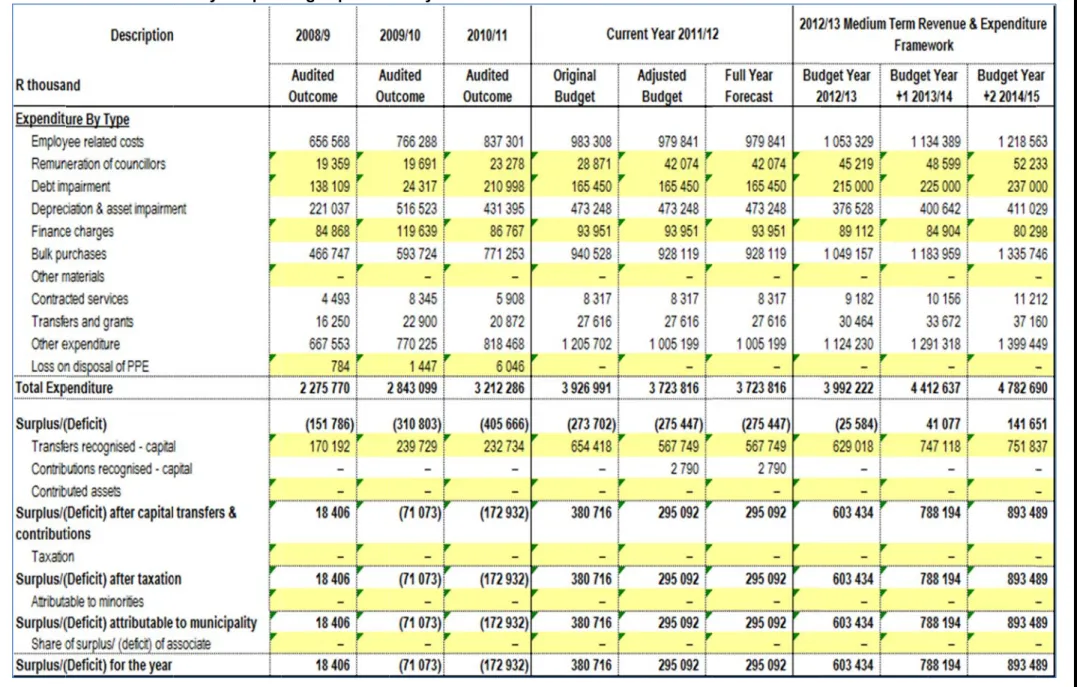
2012/2013 OPERATING EXPENDITURE
Repairs and Maintenance
The City strives for 10% repair and maintenance of its total operating budget due to the aging of the City's infrastructure and historical deferred maintenance. Due to the delaminating status of our roads, the road maintenance budget has been increased by 30 percent year on year for the MTREF period.
- Free Basic Services: Basic Social Services Package Table 14: Basic Social Services Package per household
- CAPITAL EXPENDITURE FRAMEWORK
- ANNUAL BUDGET TABLES
- CHALLENGES FACING THE MUNICIPALITY .1 Theft of Electricity
- Declining Electricity Gross Profit Margins
- Water Losses
- Salaries, Wages And Allowances
- Unfunded Mandates
- OVERVIEW OF ANNUAL BUDGET PROCESS
- IDP/Budget process overview
- IDP and Service Delivery and Budget Implementation Plan
- Financial Modelling and Key Planning Drivers
- Community Consultation
- OVERVIEW OF ALIGNMENT OF ANNUAL BUDGET WITH IDP
To receive these free services, households must register in terms of the City's Indigent Policy. The following twelve pages present the ten main budget tables as required in terms of section 8 of the Municipal Budget and Reporting Regulations. The Electricity Department has established a Revenue Protection Unit which is actively involved in removing illegal connections and reducing the theft of electricity in both the formal and informal areas within the municipality.
Some non-essential functions and services, which according to the Constitution fall under the responsibility of the National or Provincial Authorities, are provided by the municipality. The need to redefine projects and expenditures within the existing envelope of resources given the reality of cash flow and the decline of the municipality's cash position; Affordability of capital projects – original allocations had to be reduced and operating expenses associated with the previous year's capital investments had to be included in the budget as part of the 2012/13 MTREF process.
19-21 February 2012 – A Mayoral Lekgotla was held to consider a situational analysis of the city and chart a way forward on key strategic priorities that will guide the IDP and budget review towards the 2012 financial year /13. Distill key strategic focus areas for 2012 and beyond that will guide Metro's development path. 23 March 2012: IDP/Budget Advisers session held at Regent Hotel to review draft BCMM Situation Analysis, Mayor's Lekgotla and Technical Planning Session Outcomes, draft IDP 2012 /13 and the MTREF Budget.
The preparation of the 2012/13 MTREF budget is based on the approved 2011/12 mid-year budget, revision and budget adjustments. In preparing the 2012/13 MTREF budget, each function/directorate had to review the planning process, including setting priorities and targets following the mid-term review against the 2011/12 service delivery plan and budget implementation plan. A draft Service Delivery and Budget Plan (SDBIP) and draft performance agreements will be submitted to the Executive Mayor by 13 June 2012 in accordance with section 69 of the MFMA and the final SDBIP together with the performance contracts will be submitted to Council for approval on 27 June 2012.
As part of the compilation of the 2012/13 MTREF, extensive financial modeling has been performed to ensure long-term affordability and financial sustainability. The meetings were attended by 4 404 members of the public from all over the city. The IDP enables municipalities to make the best use of scarce resources and focuses services on the priorities set by the Council in response to the needs of the communities.
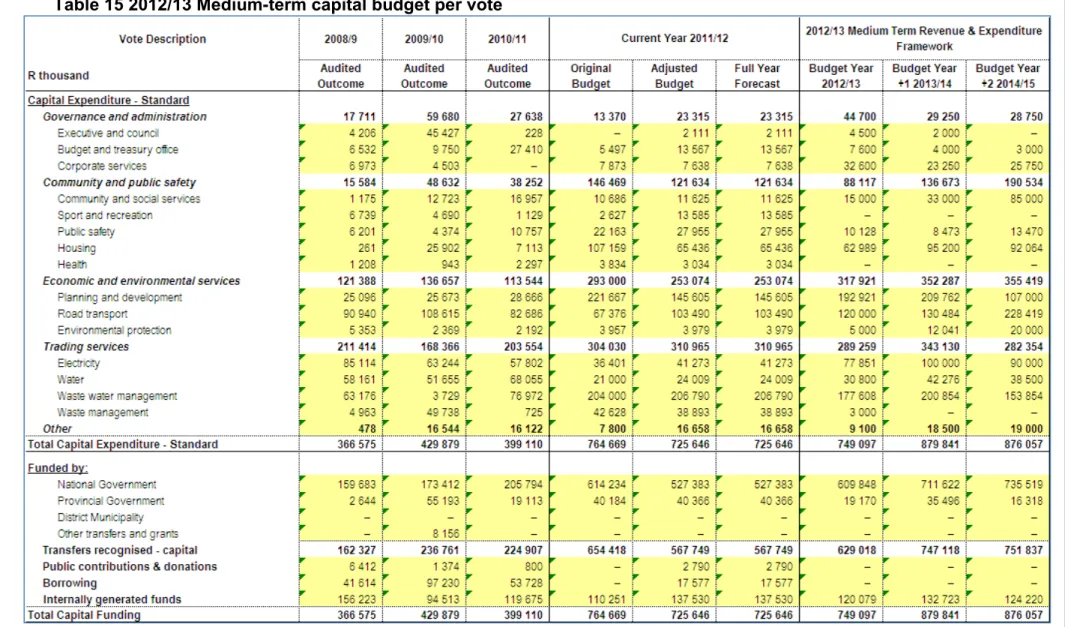
To generate an enabling environment for an economy that is growing, diversifying, generating increasing number of sustainable
The IDP offers a five-year strategic action program that aims to establish short-, medium- and long-term strategic and budgetary priorities. The plan adapts a municipality's resources and capacity to its overall development goals and manages the municipal budget. IDP aims to involve the municipality and society in jointly finding the best solutions for sustainable development.
In addition, integrated development planning provides a strategic environment for the management and direction of overall planning, development and decision-making in the municipality. The process of screening IDPs was carried out within the framework of national, provincial and district policies and legislation.
To produce sustainable infrastructure that support social and economic development;
To be a well structured and capacitated institution that renders effective and efficient services to all by 2016
To enhance and protect all environmental assets and natural resources within Buffalo City Metropolitan Municipality by 2016
- MEASURABLE PERFORMANCE OBJECTIVES AND INDICATORS Table 31 - Table SA8 – Performance indicators and benchmarks
- Free Basic Services: Basic Social Services Package for Indigent Households The social package assists residents that have difficulty paying for services and are
- Providing Clean Water and Managing Waste Water
- OVERVIEW OF BUDGET-RELATED POLICIES
- Tariff Policy
- Rates Policy
- Credit Control Policy
- Indigent Policy
- Investment and Cash Management Policy
- Long-Term Borrowings Policy
- Supply Chain Management Policy
- Policy on Reserves and Asset Management Policy
- Grant-in-Aid and Grant-in-Aid in Lieu of Rates Policy
- OVERVIEW OF BUDGET ASSUMPTIONS Table 32: 2011/2012 to 2014/2015 Budget Assumptions
- General inflation outlook and its impact on the municipal activities
- Credit rating outlook Table 33: Credit rating outlook
- Interest rates for borrowing and investment of funds
- Collection rate for revenue services
- Growth in the tax base of the municipality
- Salary increases
- Impact of National, Provincial and Local policies
- Ability of the municipality to spend and deliver on the programmes
- OVERVIEW OF BUDGET FUNDING
- Proposed Tariff Increases over the Medium-term
- Detailed Investment
- Medium-term outlook: capital revenue
- Details of Borrowings
- Cash Flow Management
- Cash Backed Reserves/Accumulated Surplus Reconciliation
- Funding compliance measurement
- EXPENDITURE ON GRANTS AND RECONCILIATIONS OF UNSPENT FUNDS
- COUNCILLOR AND EMPLOYEE BENEFITS
- MONTHLY TARGETS FOR REVENUE, EXPENDITURE AND CASH FLOW Table 48 - SA25 - Budgeted monthly revenue and expenditure
- CONTRACTS HAVING FUTURE BUDGETARY IMPLICATIONS
- CAPITAL EXPENDITURE DETAILS
- LEGISLATION COMPLIANCE STATUS
- In year reporting
- Internship programme
- Budget and Treasury Office
- Audit Committee
- Service Delivery and Implementation Plan
- Annual Report
- Policies
- OTHER SUPPORTING DOCUMENTS
Cost of capital for business expenses is a measure of the cost of borrowing relative to business expenses. In summary, various financial risks can have a negative impact on the future borrowing capacity of the municipality. As part of the planning guidelines that formed the composition of the 2012/13 MTREF, ensuring proper cash backing of reserves and funds was considered a prudent financial sustainability objective.
The liquidity ratio is a measure of the municipality's ability to use cash and cash equivalents to immediately settle or repay its current liabilities. In the latter part of the 2011/12 fiscal year, the city began implementing a strategy to increase revenues, which emphasizes book debt and revenue collection. Cost recovery is the ability of the city's available cash and investments to cover monthly ongoing operating expenses.
For the fiscal year 2012/13, the budget foresees 63,000 registered poor residents. In accordance with the municipal poor policy, registered households are entitled to 6kℓ of water, 50kwh of electricity. These initiatives and interventions will translate into a positive cash position for the city and cash and cash equivalents in the coffers are projected to increase to R1.34 billion by the end of the 2012/13 MTREF period. What are the projected funds and investments available at the end of the fiscal year.
In terms of the municipality's Loans and Investments Policy, loans are only deducted once the expenses have been incurred against the relevant project. The City has taken a prudent approach to maintain cash levels at three months to ensure continued liquidity of the municipality to meet its daily obligations of its operations. Any underperformance with respect to collections may put upward pressure on the City's ability to meet these desired levels.
Long-term investment mainly consists of the sinking funds for the repayment of future loans. As part of the MTREF 2012/13, the improvement in the cash position of municipalities causes the ratio to increase from 3.5 months to 4.0 and 4.6 months in the respective last years. Under the City's Supply Chain Management policy, no contracts will be awarded outside the medium-term revenue and expenditure framework (three years).
The city is participating in the Municipal Financial Management Internship program and has hired five interns who are being trained in various divisions of the Finance Department. Since the introduction of the internship program, the city has successfully hired and trained 11 interns through this program.
